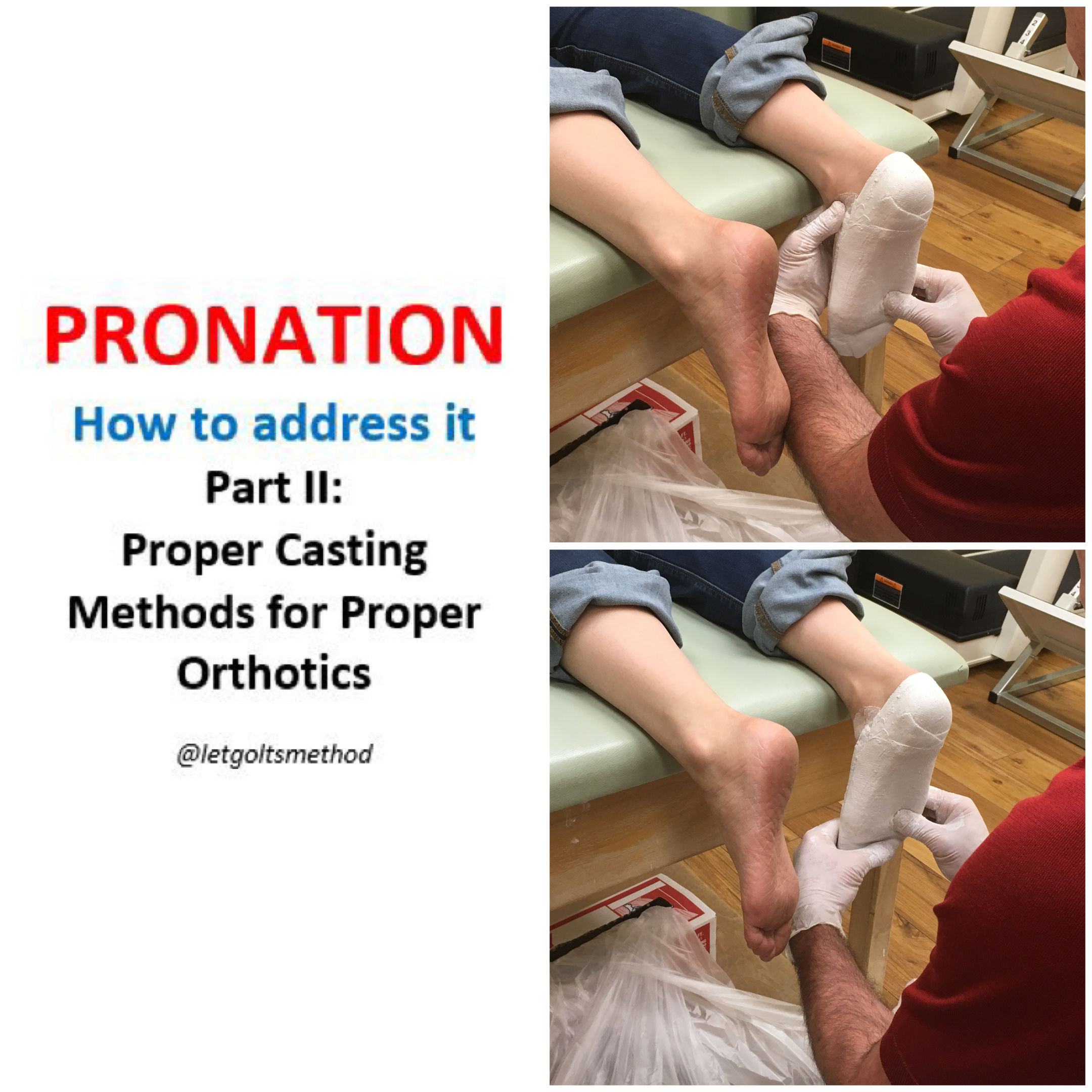Pronation Part VII – How to Address Pronation II – Casting for Orthotics
As mentioned in our last post, many pairs of orthotics are made incorrectly and don’t address the main issue with pronation. Properly made orthotics must have support for the ball of the foot in order to properly address one’s pronation and the issues caused by it. If you haven’t already, go check out our previous pronation posts to get the relevant background information for this post!
Most issues with incorrectly-made orthotics can be traced back to the casting method—i.e., the method used to create the molds of the feet (which are then used to make orthotics). Many methods involve someone stepping into impression molds or onto pressure plates. The problem with this is that the individual is in a weight bearing position, which completely misses the reason behind pronation.
We cannot stress enough that pronation occurs because the ball of the foot must come down to the ground when weight bearing. Therefore, methods requiring someone to be in a weight bearing position will not result in accurate molds of the feet, as they won’t be in a subtalar neutral position. Proper casting methods require people to be in non-weight bearing positions in order to make orthotics properly. That said, many methods involving sitting positions also tend not to result in accurate foot molds: they often rely on active/passive dorsiflexion of the foot to hold the “neutral position” without accounting for the side-to-side rotation that occurs with pronation.
In our clinic, casting is done in a prone (lying face down) position. That way, the feet aren’t loaded and can be properly set (and held) in subtalar neutral while the casts are made. As seen in the video below, strips of plaster are used to encase the feet, which are held in subtalar neutral as the plaster sets. Based off of these molds, the orthotics will then be made with the proper amount of support to keep the ankle in subtalar neutral.
Pronation Part VII – How to address pronation – casting
One last, but very important, thing to remember about orthotics: since pronation is important for shock absorption, orthotics should still allow for some pronation to help with shock absorption, but not so much that the foot is constantly thrown out of neutral alignment.
 Los Angeles Magazine’s Best Physical Therapy Practice in LA
Los Angeles Magazine’s Best Physical Therapy Practice in LA

